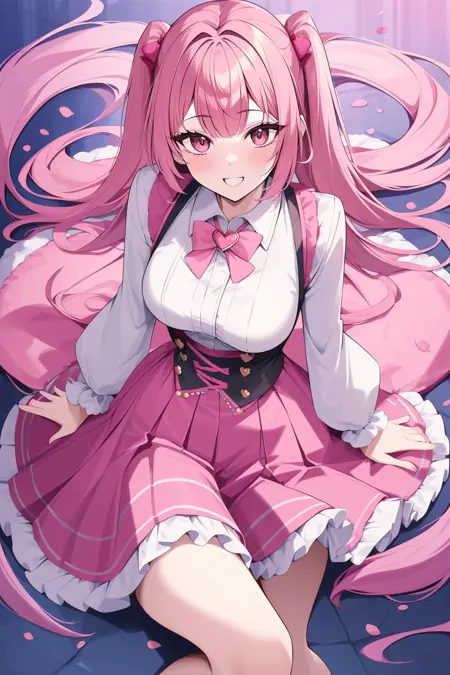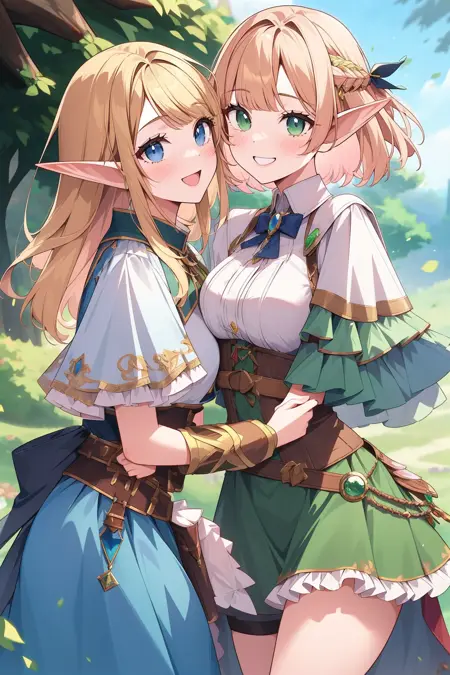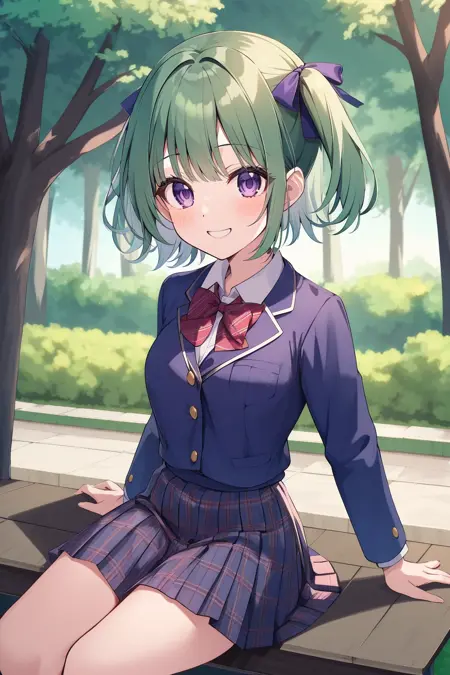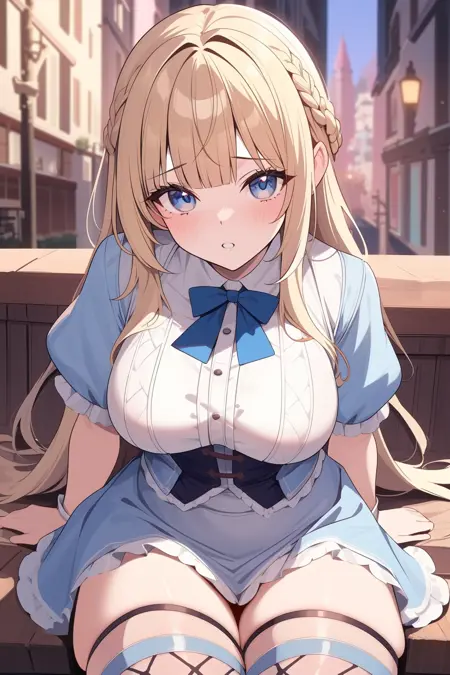ReDefine-Experimental
Details
Download Files
Model description
note: "Experimental" means experimental.
ver.0.31
The base model has been changed from a pure NAI2 to a merge model. The behavior of NAI2 in response to prompts is quite different from the general SD1.5 model. This closes the gap a little, and also makes it possible to process prompts that were difficult with previous models. However, there are some prompts that are completely difficult to handle, so it is not an all-purpose model.
●Sampler
Euler a is recommended, but some sample images use Restart.lab samplers. Originally, I was looking for something that would allow me to use Kohaku_lonyu_yog because I couldn't use it with A1111 for Blackwell, so I introduced this. This is a type of sampler that adds noise in the middle of a step and re-processes it, and it first renders normally with t2i, and then repeats the generation with i2i from the middle. It does not improve the image unconditionally, but since the restart conditions can be set arbitrarily, I think it is worth introducing. In addition, with the Restart.lab sampler, restarts can be set with algorithms such as Euler a and Kohaku_LoNyu_Yog.
https://yukitoki.blogspot.com/2023/12/webui-1111restartlabstable-diffusion.html
●Output resolution
This time, I went back to only low-res 512x768 dots. This is because the output is fast and the defects are easy to see. In the first place, the high resolution that the ReDef series aims for is related to the definition of the data. It was not intended to output a large image itself, but to include more detailed information. If you select a large image, you will not be able to utilize the learning content at 512x512 dots, which is likely the majority, and the composition will often be quite limited. In the NAI2 series, 1024 dots were output as a demonstration, but this is not practical, so it will be discontinued.
●Quality prompt
Since there is no alternative, I use quality prompts for sample image generation based on the NAI2 sample. However, this can sometimes cause the picture to break. If the prompts are not effective for multiple people, etc., adjust the quality prompts. In cases where the picture breaks down significantly, weakening the quality prompts can often solve the problem.
ver.0.3 (based on NAI2)
I had been making various prototypes for the third in the ReDef series, but I kept making versions right before the release date and changing the direction and starting over.This one is based on NovelAI ver.2. Only NAI2 is used as ckpt.
All samples are 1024x1536 pixels (non-HiRes.Fix) and 20-step output by Euler a. CFG scale is 7.
The ReDef series was originally aimed at high-resolution output. The LoRA used for additional data is created with a maximum size of about 1280 dots, so previous models can be used up to about 640x960. As the base model does not support 1024x1536, it was necessary to prepare much more data.
Since NAI2 is based on 1024, I tried it with only NAI2 this time. The current level of completion is not high, and there is still not enough data. Nevertheless, I was able to confirm that it can be used as a base model.
The problems are:
-It cannot be properly confirmed with LCM
-Quality prompt is essential
Personally, I don't like it, but generally speaking, few people will have a problem with it (I used the NAI2 sample as a reference, but see the sample for details).
Prompt fidelity was low in NAI2. In the future, it will be necessary to base it on merging with existing models. Finger and body stability are eternal issues.
ver.0.21SR
This is a version of ver.0.2 that merges commonly used (and somewhat effective) prompts and so-called negative embeddings (TI) into the model (both do the same thing).
・Prompt merge
Prompts are converted into TIs and merged into the model. This time only positive prompts are included, but negative prompts can be processed in the same way. It doesn't make much sense for people who use a lot of decorative quality prompts, but it has the effect of making the expression of simple prompts more realistic.
・Negative Embeddings Merge
The use of TI does not always have a positive effect, but here I have incorporated the relatively harmless FastNegativeV2. We also tried BadHand or UnrealDream etc., but personally, I felt that they were not so good.
These slightly improved body stability, and although the improvement in the fingers was subtle, sometimes clearly beautiful hands were produced. Larger faces were improved, but facial expression at medium distances and beyond remained the same or slightly worsened, and prompt fidelity was slightly reduced. Overall, although more stable images were produced, there was a tendency for more boring images to appear, such as standing still.
This time we only merged at ±1.0, but with some adjustments it seems that it could be used more effectively. The burn-in of the prompts seems much stronger than the concept emphasis by LECO and iLECO (concept erasure has not been verified), and I'm considering replacing it with the concept-based LoRA group in the future.
As with the previous sample image, the 7-step, low-resolution output using LCM LoRA is used.
ver.0.2SR
This is a semi-realistic test model. Unlike ver.0.1, it is based on merging several models. Many of the components are the same as ver.0.1, but it has a simpler structure. Of the newly added elements, only one is actually being verified. Two new materials were not adopted because they did not have the expected effect. I will readjust it.
The output is 7-step (or 8-step) low-resolution using LCM LoRA as in the previous version. The body structure, fingers, and mid-distance face are more unstable than in ver.0.1. In addition, there are times when NSFW elements appear more than necessary. There are some adjustment errors, but this is due to the increase in live-action body structure reinforcement materials. There is too little full-body material for clothing...
ver.0.1
This is an example of a model I've been experimenting with recently.
All the samples are 7-step low-resolution output by LCM.
You might ask if I'm still working on SD1.5, but I'm still making new discoveries. Although there are limitations to the format, the possibilities are still expanding.
However, even if you go up to elemental, there are limitations to merging alone, and full finetuning is expensive, and above all, it's summer. Therefore, the purpose of the current experiment is to redefine the human body structure in SD1.5 through additional learning with LoRA.
The model this time shows the test process of the LoRA I created, but it is not final. The test was based on RM01 and other models, and the effect of the new LoRA was confirmed.
Except for LoRA, which makes the picture cute, which is one of the subjects of this test, I made almost no adjustments to the face or overall color. I added a little BGEnhace because the background was unexpectedly off-target, but the only other thing I did was to use auxiliary LoRA to turn the RM01 picture into an anime picture.
The body structure sometimes collapses significantly. Although the main focus of this project was improving the fingers, there are also some negative effects from actively learning difficult angles. It seems that there is still not enough learning material.
It's not that they don't appear at all, but it's not expected to display men. Girls appear whether it's a landscape or something else.
About 4,000 images were used this time. Compared to Full Finetune, there are fewer images, but many of the display elements are new learning. I could call it a Trained Model, so I registered it there. I also have tens of thousands of images collected with EtudeFT and other tools, which I plan to classify, convert to LoRA, adjust, and integrate into the base model. This time, I used the general-purpose RM01 as the base model, but I am also prototyping base models suitable for each purpose, such as anime drawings and photos.
Many LoRAs are created as DoLAs (LyCORIS), and this time I had a hard time figuring out how to accurately merge LyCORIS. In the end, I divided and merged 11 times, and got similar results. Because there are so many merges, there is also degradation in the details of the images.

















